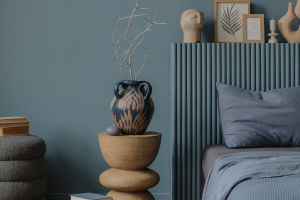Have you ever felt instantly calm in a softly lit room or strangely anxious in a crowded, windowless hallway? That's no coincidence.
From the light spilling through a skylight to the curve of a hallway, spatial design deeply affects our mood, thoughts, and decisions.
This article explores how the psychology of space and light can subtly—and powerfully—shape our behavior in daily life.
The Brain's Sensitivity to Space
Humans are spatially aware by nature. We process surroundings through sight, sound, and our body's position in relation to objects. Narrow spaces can trigger feelings of confinement or tension, while open spaces often create a sense of relief or freedom.
Neuroscience supports this: our hippocampus, the brain area responsible for spatial memory and navigation, lights up when we move through a space that engages our senses.
Light: The Invisible Guide
Light is one of the most influential yet overlooked design elements. It acts as an invisible guide, influencing everything from circadian rhythms to productivity. Exposure to natural light boosts serotonin levels, improving mood and alertness.
Conversely, poor lighting, especially harsh artificial light or dimness, can cause eye strain, headaches, or depressive symptoms.
A landmark 2014 study from Northwestern University discovered that office workers with more natural daylight exposure slept longer and had better quality rest. In hospitals, patients in rooms with large windows often recover faster than those in artificially lit rooms. Light doesn't just help us see—it changes how we feel and behave.
Spatial Layout and Emotional Flow
A building's layout influences how emotions are distributed throughout a space. For instance, open layouts often encourage interaction and transparency, while compartmentalized spaces may support privacy and concentration.
Curved lines and organic shapes are generally perceived as calming, while sharp angles can be energizing—or in some cases, stressful.
Architects and interior designers often use spatial arrangement to create a particular mood. Museums, for example, use lighting and hallway shape to control the pace of visitors, ensuring moments of pause and reflection.
Colors, Shadows, and Perception
Light reveals color, and color has deep psychological impacts. Warm lighting enhances red, orange, and yellow tones, which are associated with energy and optimism. Cool lighting, on the other hand, highlights blues and greens, which calm the mind and can slow heart rate.
Shadows also play a role. Strategically placed shadows can add depth, mystery, or even comfort. Think of a cozy reading nook partly tucked in shadow—it feels safe and peaceful. On the other hand, harsh lighting with strong contrasts may feel intense or clinical. Balancing light and shadow is essential to shaping an emotional experience.
Personal Spaces and Control
The sense of control in a space contributes significantly to emotional well-being. People tend to feel more relaxed in areas where they can adjust lighting, seating, or temperature.
In a 2020 Harvard Health study, participants who had control over their environment—like adjustable blinds or dimmable lights—reported reduced stress and greater satisfaction at work.
This concept is particularly important in educational or therapeutic environments, where individuals with sensory sensitivities may need adaptable lighting or quiet zones. Giving people the ability to control their environment isn't a luxury; it's a psychological necessity.
Light and Productivity
Many companies now recognize the link between light and productivity. Offices that incorporate daylight, glass partitions, and skylights often see higher employee morale and output.
According to a 2018 World Green Building Council report, workers in daylight-rich environments experienced a 15% increase in productivity compared to those in artificially lit spaces.
Even the direction of light matters. North-facing windows provide consistent light throughout the day, ideal for focused work, while east-facing windows offer energizing morning light, perfect for starting the day strong. Artificial light systems that mimic natural daylight cycles are also being used to support long-term mental focus.
Spaces That Heal
Hospitals, therapy centers, and even meditation rooms now prioritize design that encourages healing. Soft lighting, spacious layouts, and natural materials are all carefully chosen to lower anxiety and promote calm. In healthcare architecture, even ceiling height and light placement are planned to reduce sensory overload.
One example is the Maggie's Centre in London, designed to provide cancer patients with comfort and dignity. The building uses warm wood, diffused natural light, and a flowing layout to support emotional healing. Such spaces prove that architectural choices have real psychological outcomes.
Urban Light and Safety
In city environments, lighting also plays a role in perceived safety. Well-lit sidewalks, open public spaces, and illuminated building entrances help people feel secure. Poor lighting, on the other hand, can create unease or even avoidance of certain areas, disrupting the flow of city life.
Urban designers often use "layered lighting" strategies—combining streetlamps, building facade lights, and accent lighting—to make neighborhoods more inviting and functional after dark.
Designing Mindful Interiors
Interior design that considers the psychological effects of space and light fosters more mindful, human-centered environments. Incorporating features like skylights, open sightlines, and soft corners can create spaces that feel intuitive and supportive.
Even small changes, like rearranging furniture to maximize sunlight or adding mirrors to reflect light, can significantly improve a room's emotional tone. Whether at home, school, or work, intentional spatial design supports mental clarity, focus, and emotional balance.
Conclusion: What Do Your Spaces Say?
Take a moment and look around. Is your environment helping you feel your best, or silently working against you? Whether it's a sun-drenched reading corner or a clutter-free workspace, your surroundings speak to your mind and emotions—often louder than words.
Next time you walk into a room, ask yourself: How does the space make me feel? With that awareness, you'll begin to see light and space not as background, but as powerful tools that shape your daily life.


